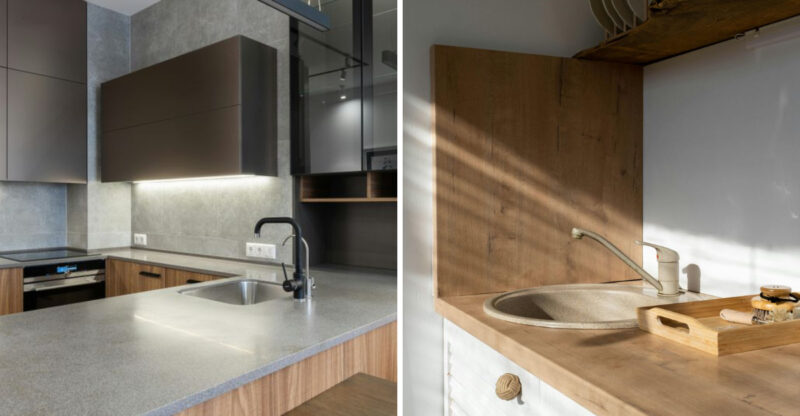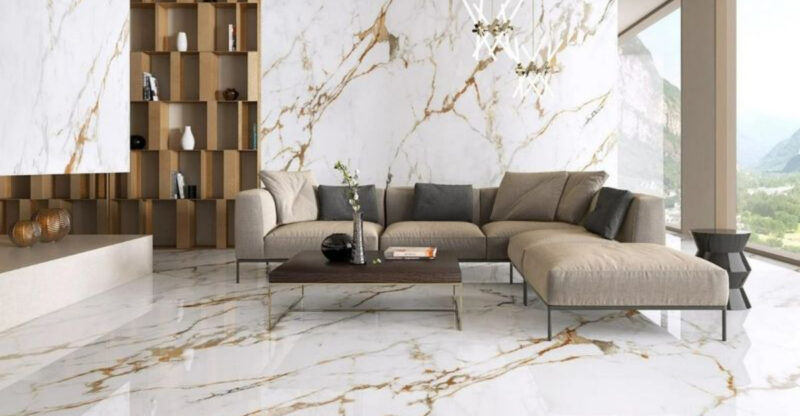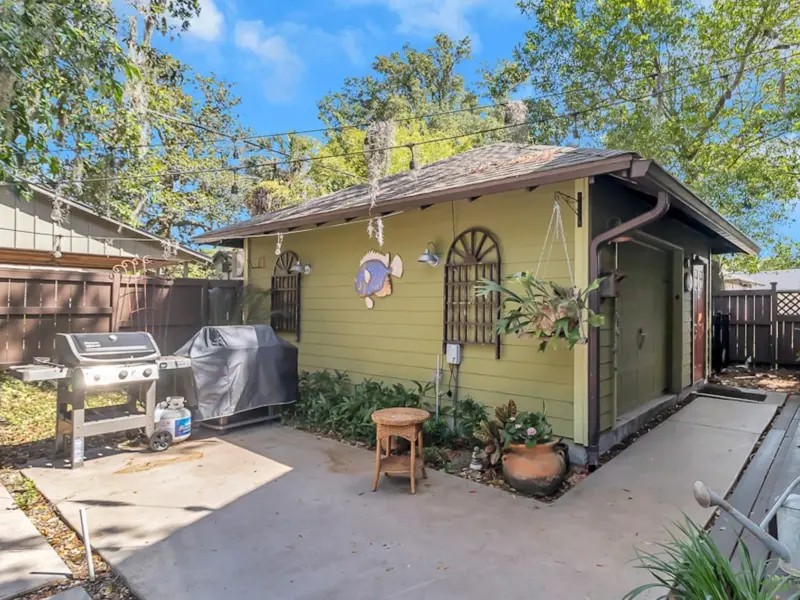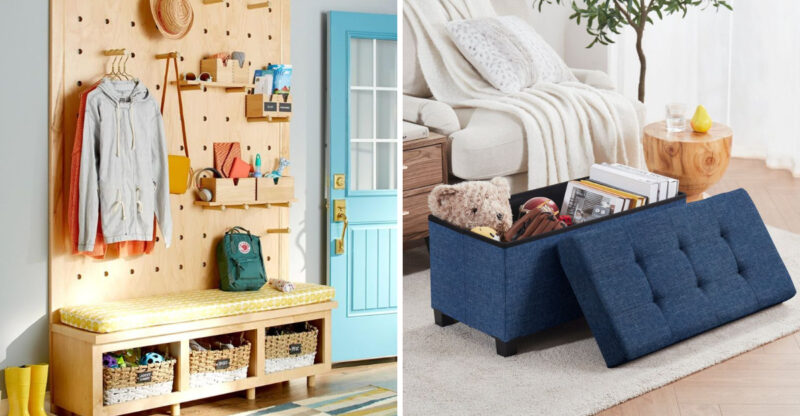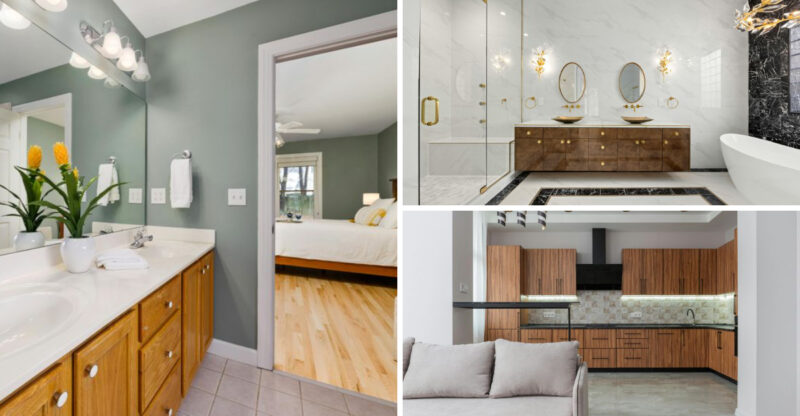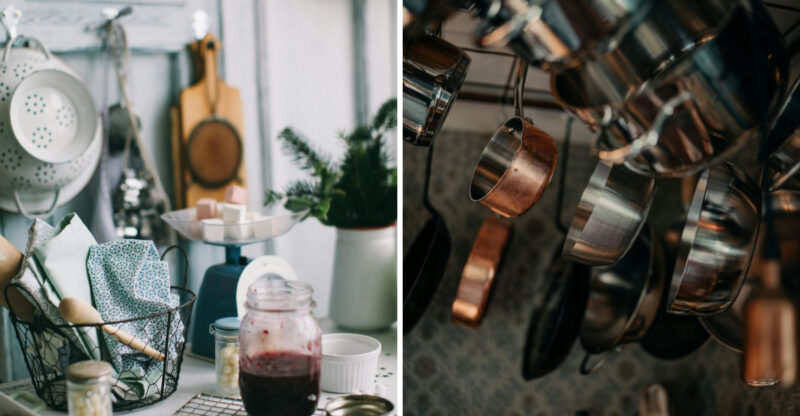18 Examples Of The English Kitchen Style That’s Replacing The Modern Farmhouse
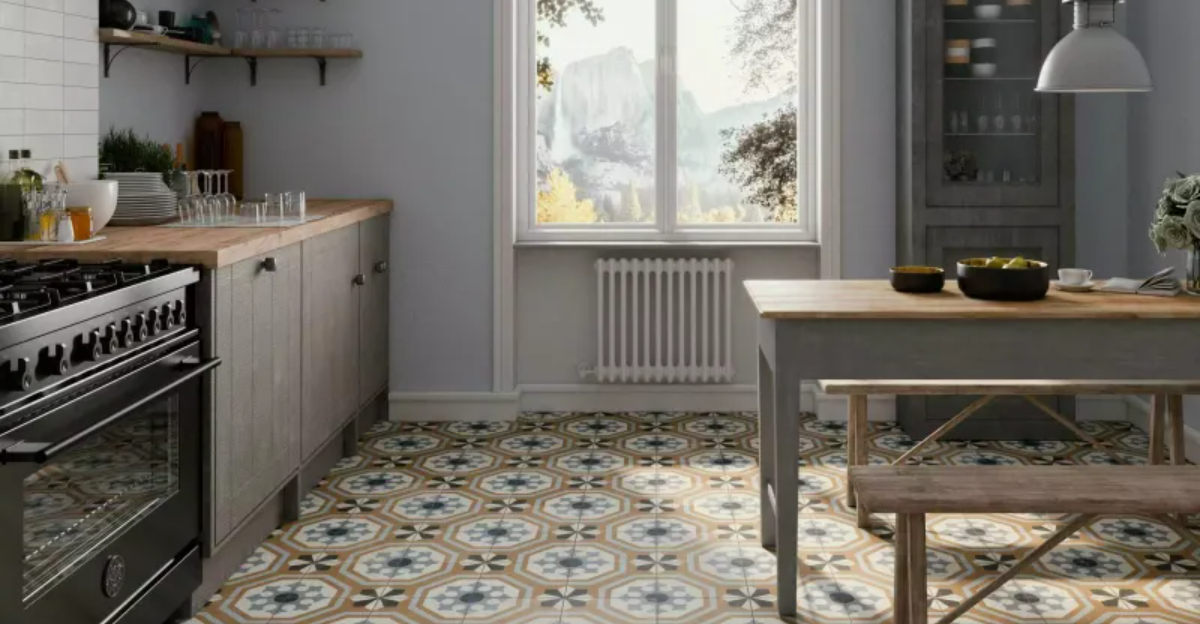
The modern farmhouse look has dominated kitchen design for years, but a new trend is taking over.
English kitchen style blends classic elegance with lived-in comfort, offering a timeless alternative to the now-ubiquitous farmhouse aesthetic.
This charming approach celebrates heritage details, soft colors, and traditional craftsmanship that feels both sophisticated and wonderfully homey.
1. Shaker Cabinets

Nothing says English kitchen quite like the clean lines of Shaker cabinetry. These understated cabinets originated with the religious Shaker community but have become a cornerstone of English design with their simple framed doors and quality craftsmanship.
I love how versatile they are painted in soft cream or sage green, they instantly create that coveted English cottage feel. The beauty lies in their unpretentious design that never feels trendy or dated.
When choosing hardware, opt for simple black iron or aged brass to complete the look. Many English kitchens feature these cabinets floor-to-ceiling, maximizing storage while maintaining that timeless appeal that’s been charming homeowners for centuries.
2. Butcher Block Counters
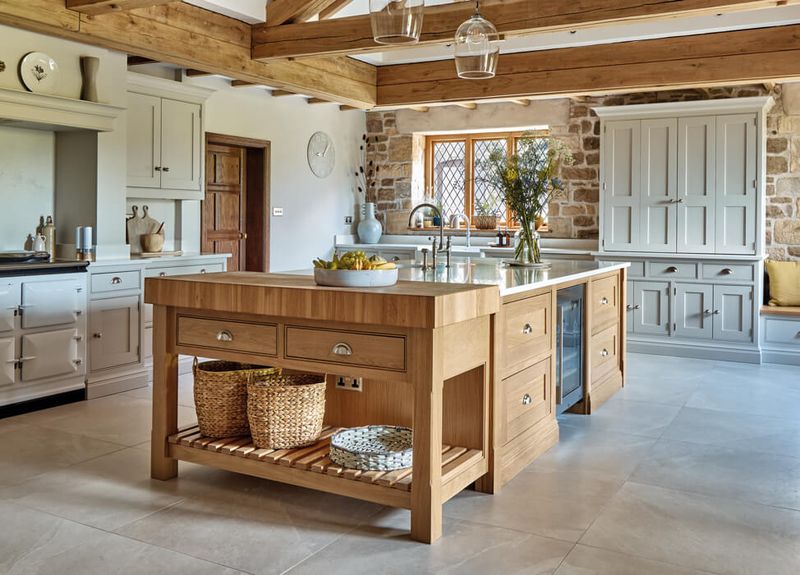
Warm wood countertops instantly transform a kitchen into a cozy English workspace. Unlike the cold marble or quartz popular in modern farmhouse designs, butcher block brings natural warmth and practical functionality that improves with age.
The honey-toned oak or rich walnut surfaces develop a beautiful patina over time, telling the story of family meals and holiday baking sessions. I’ve noticed how these counters pair beautifully with painted cabinets, creating that perfect balance of rustic and refined.
Though they require occasional oiling, the maintenance is worth it for the authentic character they bring. Many English kitchens feature a mix of surfaces—perhaps marble for baking areas and butcher block for the main workspace—creating layers of texture and history.
3. Soft Pastel Colors
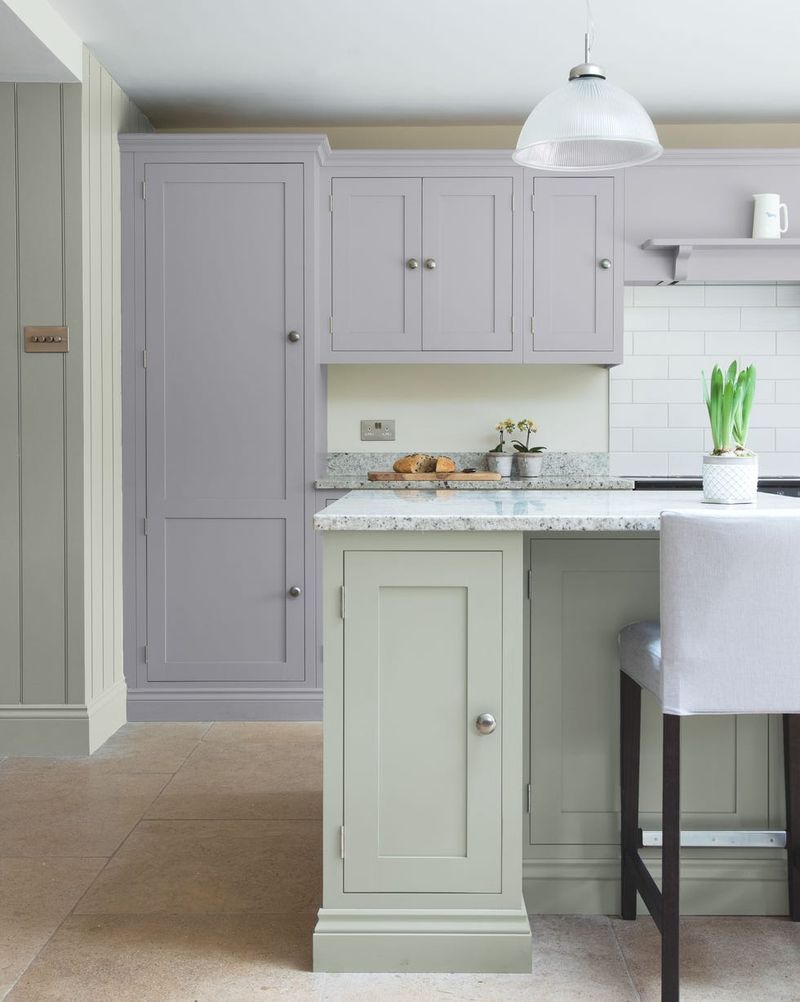
Forget the stark whites of modern farmhouse style! English kitchens embrace gentle color palettes that make the space feel lived-in and welcoming. Soft blues reminiscent of robin’s eggs, dusty pinks, pale greens, and buttery yellows create a soothing atmosphere that feels collected over time.
These muted tones have historical significance too many are inspired by heritage paint collections from brands like Farrow & Ball that replicate colors found in historic English homes. I particularly adore how these colors change throughout the day, appearing differently in morning light versus evening glow.
When painting your kitchen, consider leaving some natural wood elements unpainted for contrast. This balanced approach prevents the pastel palette from feeling too precious or feminine while maintaining authentic English charm.
4. Open Plate Racks
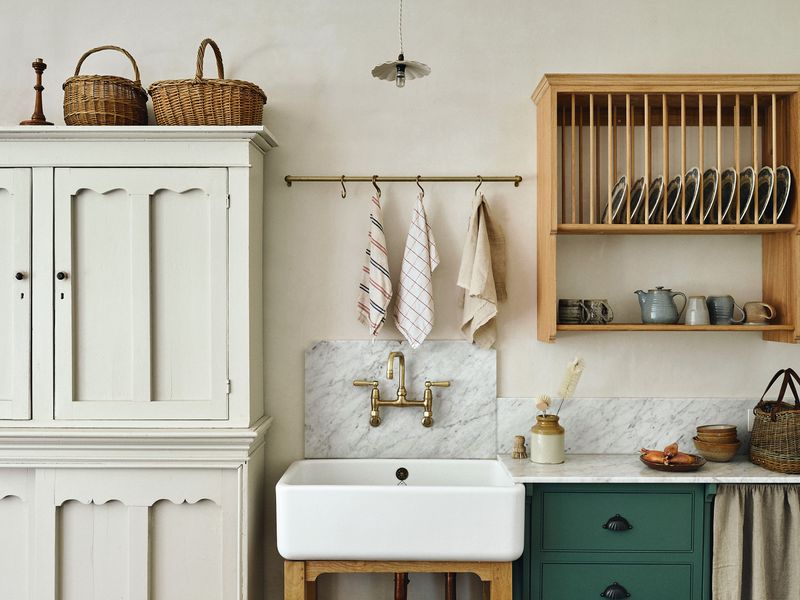
Who needs closed upper cabinets when you can display your everyday dishes with such charm? Open plate racks are quintessentially English, offering both practicality and visual interest that closed storage simply can’t match.
These wall-mounted wooden racks allow plates to stand vertically, making them easy to grab while creating a lovely decorative element. If you’re worried about dust, don’t be—these racks are meant for dishes you use regularly.
My favorite approach incorporates a mix of vintage and new pieces, perhaps blue and white transferware alongside simple white everyday plates. This casual display method feels genuinely English because it prioritizes accessibility and honest living over hiding everything behind doors, creating that perfectly imperfect look that defines authentic English style.
5. AGA Cookers

If there’s one appliance that screams English kitchen, it’s the iconic AGA cooker. These cast-iron beauties aren’t just stoves—they’re institutions, often serving as the literal and figurative heart of the home.
Unlike modern ranges that try to disappear into cabinetry, an AGA proudly announces itself in rich enamel colors like deep red, cream, or racing green. They’re constantly warm, creating that cozy kitchen atmosphere that makes everyone want to linger.
Though traditional models stay on continuously (heating small English cottages in the process), newer versions offer more energy-efficient options. What makes these cookers special isn’t just their distinctive look but their cooking method the different-temperature ovens and hot plates create incredible results that devotees swear can’t be replicated with conventional appliances.
6. Marble Backsplashes
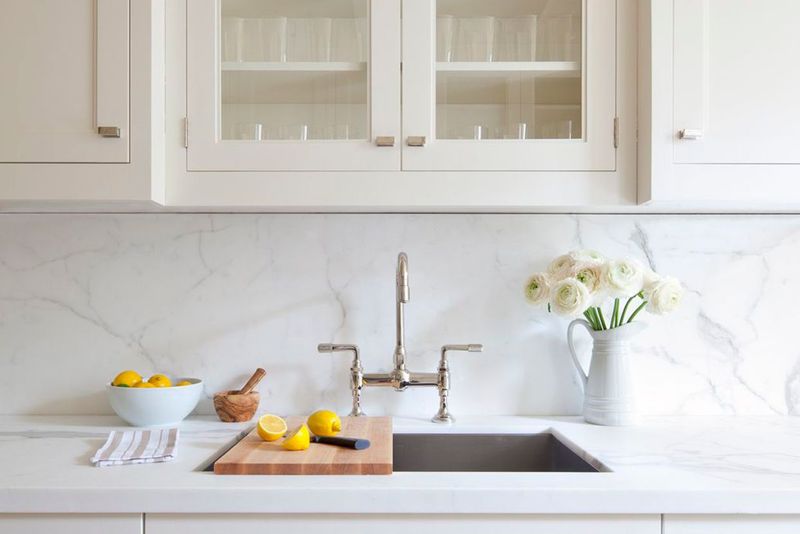
English kitchens masterfully balance rustic and refined elements, and nothing exemplifies this better than a marble backsplash. Unlike the ubiquitous subway tile in farmhouse kitchens, English-style marble brings subtle luxury with its natural veining and soft sheen.
Carrara or Calacatta marble with gray or gold veining works beautifully, especially when honed rather than polished for a more subdued look. I particularly love when the marble extends slightly up from countertops rather than covering the entire wall—it feels more authentic to historic English homes.
When selecting marble, embrace pieces with character and variation rather than perfectly consistent patterns. The slightly imperfect nature of natural stone aligns perfectly with English design philosophy that celebrates materials that age gracefully and tell a story.
7. Vintage Brass Hardware
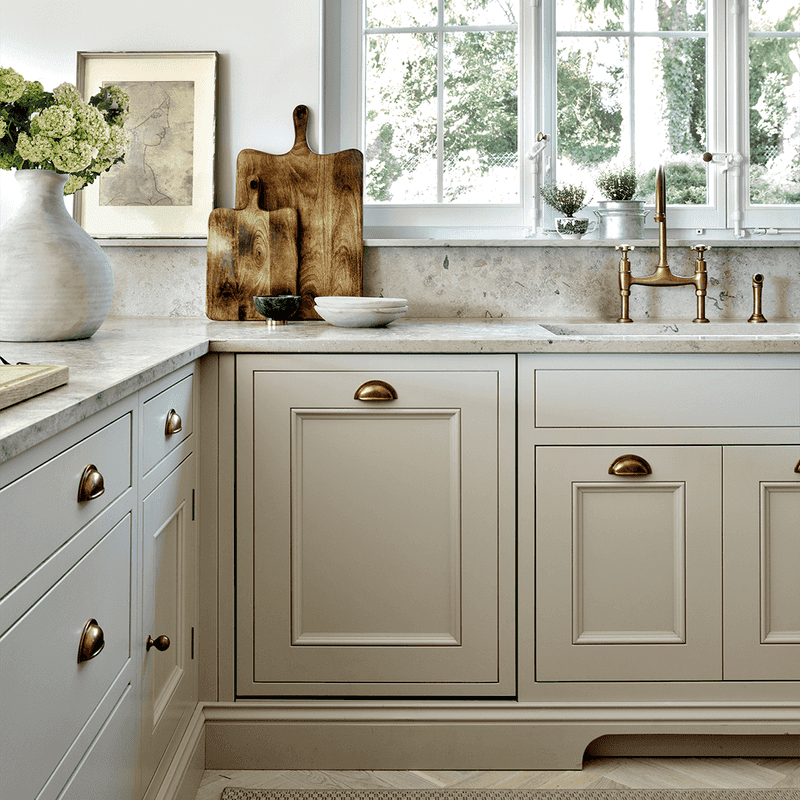
Aged brass pulls and knobs bring instant character to English kitchens that shiny chrome or black hardware simply can’t match. The warm, burnished finish develops a beautiful patina over time that feels authentic and collected rather than mass-produced.
Cup pulls on drawers and simple knobs on cabinets offer that perfect balance of function and beauty. What makes these details distinctly English is their understated elegance they’re never flashy or oversized, just quietly beautiful.
If you’re renovating, consider salvaging original hardware or seeking out genuine vintage pieces from architectural salvage shops. Even new brass hardware can be artificially aged with special solutions or simply left to develop character naturally. This attention to these small details is what elevates an English kitchen beyond mere trend to timeless design.
8. Freestanding Furniture
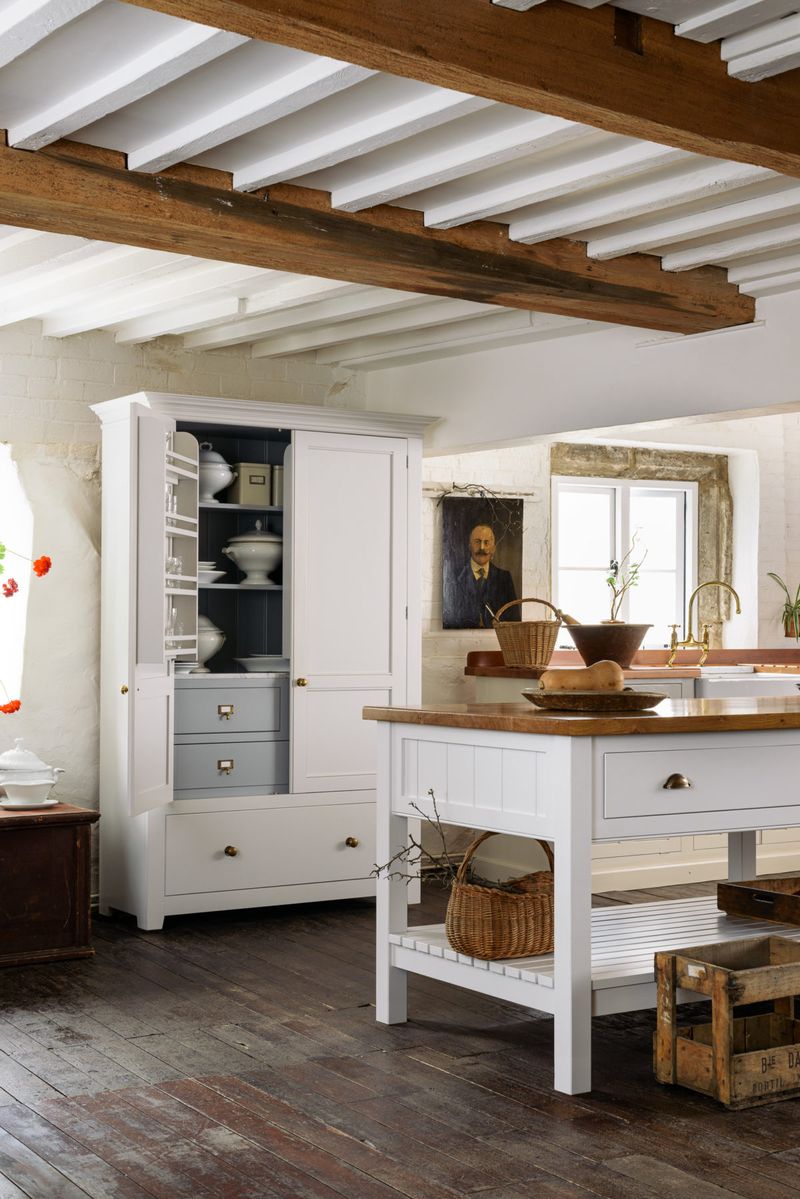
Unlike American kitchens with their wall-to-wall built-ins, English kitchens embrace the charm of freestanding pieces. A Welsh dresser displaying ceramics, an antique hutch repurposed for storage, or a standalone workable create that collected-over-time feeling that defines English style.
These pieces bring architectural interest and history that built-ins simply can’t replicate. My favorite approach mixes genuinely old furniture with cabinetry for a look that feels authentic rather than staged.
When incorporating freestanding pieces, look for quality construction and interesting details like turned legs or beadboard backs. Even if you can’t find true antiques, many companies now create reproduction pieces with distressed finishes that capture the same spirit. This approach creates a kitchen that feels like it evolved naturally over generations rather than being installed all at once.
9. Deep Belfast Sinks
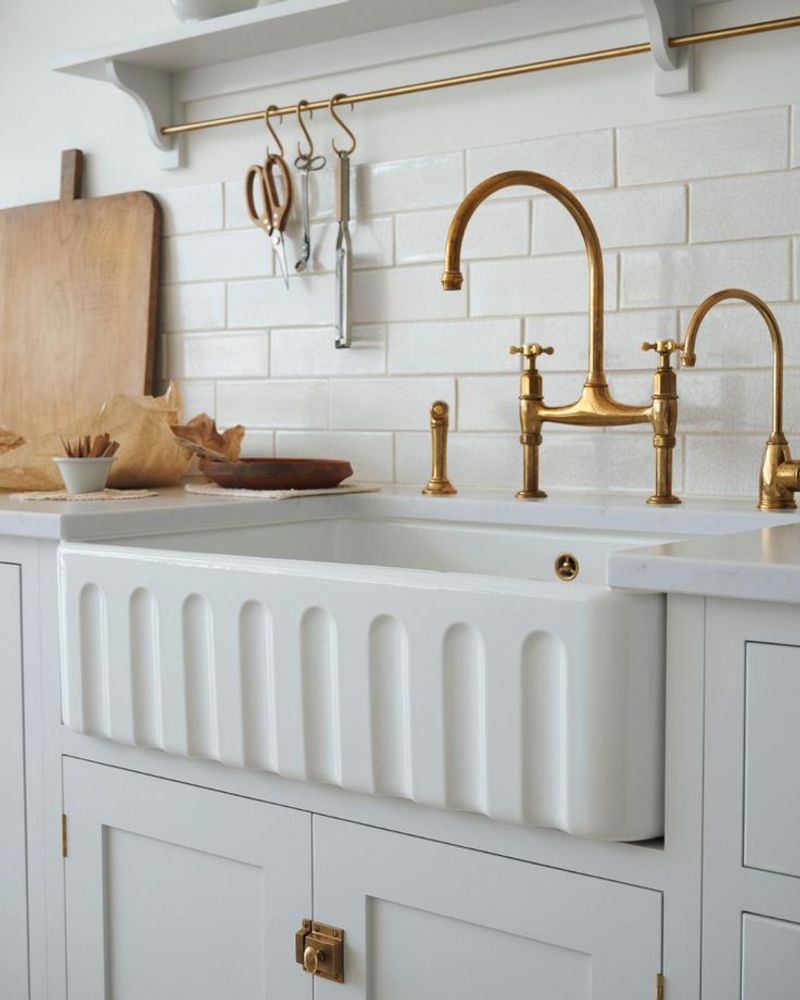
Farmhouse sinks might be trendy in modern American kitchens, but their ancestor the deep ceramic Belfast sink has been a staple in English kitchens for centuries. These substantial white sinks feature a distinctive weir overflow (that little hole near the top) that distinguishes them from other farmhouse styles.
Originally designed for servants in grand English homes, these practical sinks are deep enough to handle everything from washing large pots to arranging flowers. I adore how they protrude slightly from cabinetry, creating that freestanding feeling even within built-ins.
When installing one, consider traditional bridge faucets in unlacquered brass that will age beautifully with time. For the most authentic look, skip the modern accessories and embrace the sink’s beautiful simplicity with perhaps just a natural wooden dish brush and handmade soap nearby.
10. Rustic Wood Floors
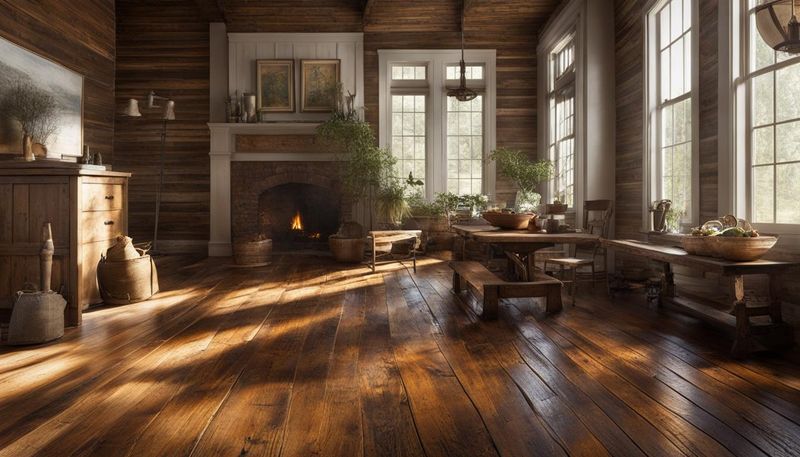
While modern farmhouse style often features pristine wide-plank floors, English kitchens celebrate wood flooring with character and history. Think narrower planks in oak or pine with visible knots, slight color variations, and perhaps even gentle wear patterns that suggest generations of family gatherings.
These floors aren’t perfect—and that’s precisely their charm. I’ve noticed how they ground the space with warmth and authenticity that newer, more uniform floors simply can’t match. Many English homeowners opt for reclaimed wood from old barns or factories for genuine age and patina.
If authentic reclaimed wood isn’t possible, newer engineered options with hand-scraped textures and variable widths can create a similar effect. Finish with natural oils rather than high-gloss polyurethane to maintain that soft, matte appearance that feels genuinely English rather than manufactured.
11. Glass Cabinet Doors
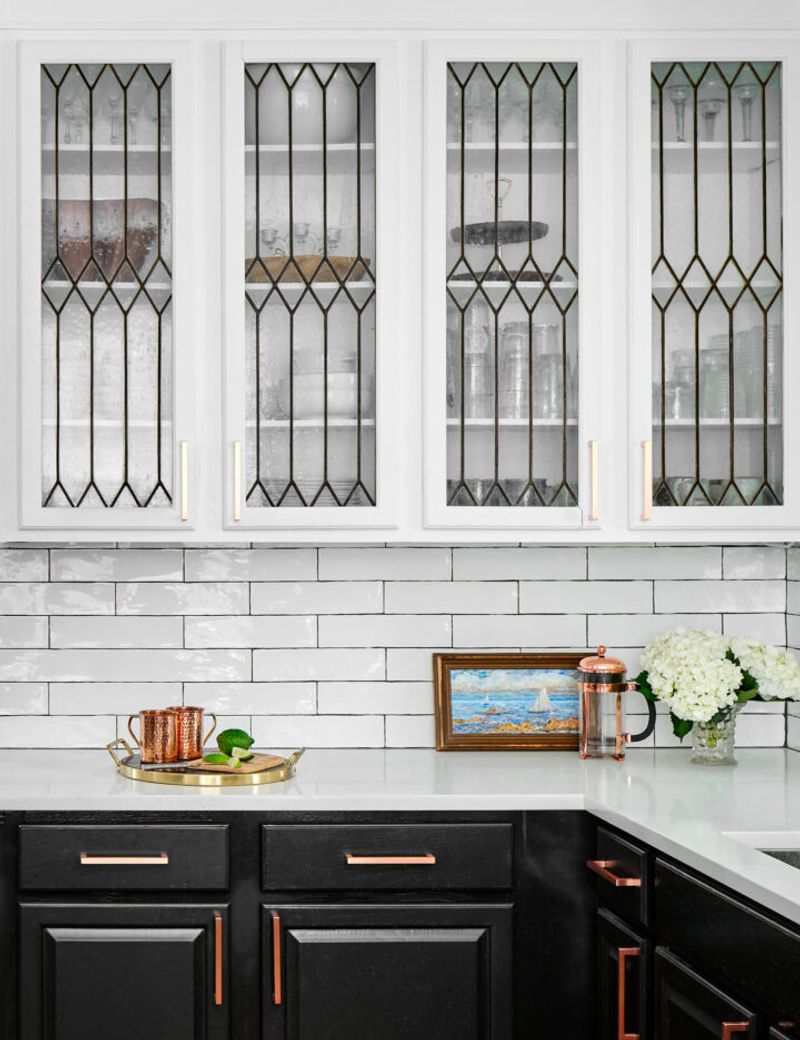
Glass-fronted cabinets offer that perfect blend of display and practical storage that English kitchens are known for. Unlike completely open shelving, these cabinets keep dust at bay while still allowing you to showcase pretty dishes and glassware.
Traditional English versions often feature mullioned glass with multiple panes rather than single sheets, creating architectural interest and a sense of history. I particularly love when the glass has slight imperfections or bubbles, suggesting it might be original to an older home.
When styling these cabinets, resist the urge to overfill them. English design embraces a certain restraint perhaps displaying a collection of blue and white china or simple white ironstone with plenty of breathing room. This thoughtful approach to displaying everyday items transforms utilitarian storage into something beautiful yet still completely functional.
12. Floral Roman Shades
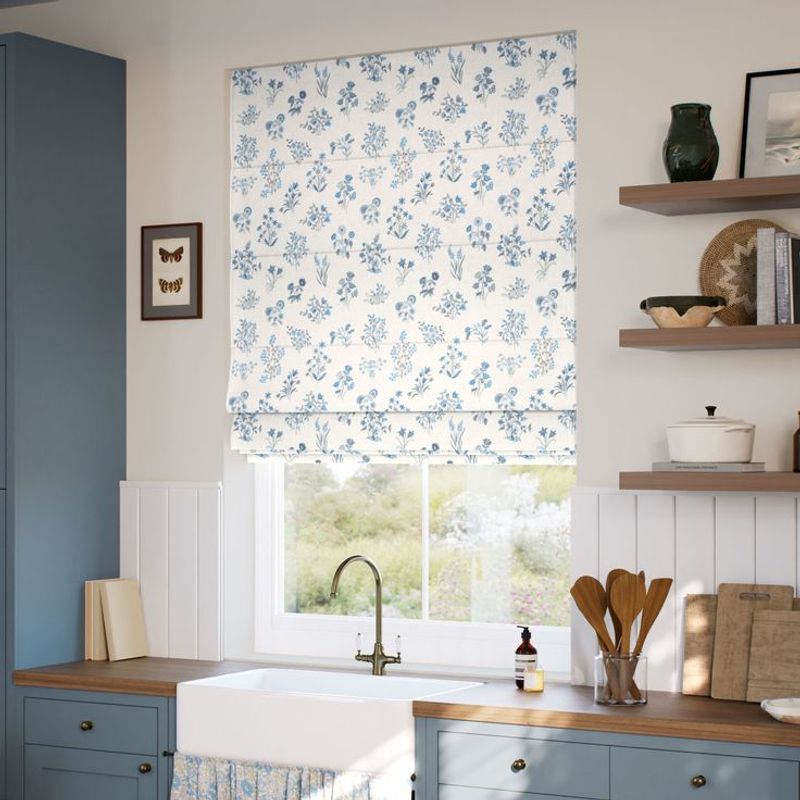
Soft fabric window treatments bring that quintessential English coziness to kitchens. Unlike the stark minimalism of modern farmhouse blinds, English kitchens embrace pattern and color through Roman shades in classic floral prints.
Chintz and botanical patterns from companies like Colefax and Fowler or Liberty have adorned English windows for generations. These fabrics introduce subtle pattern without overwhelming the space, softening the harder edges of cabinetry and appliances.
When selecting fabric, look for small-scale prints in colors that complement your cabinetry—perhaps faded blues with cream cabinets or soft pinks with pale green. The beauty of these shades lies in their practicality too—they can be raised completely for maximum light or lowered for privacy and shade, making them perfect for kitchen windows that might face neighbors or strong afternoon sun.
13. Painted Furniture Pieces

Hand-painted furniture brings instant charm and personality to English kitchens. Unlike the uniform cabinetry in modern farmhouse designs, English style celebrates individual pieces with special painted finishes perhaps a hutch in duck egg blue or an island in a rich olive green.
These painted pieces often feature subtle distressing or crackling that suggests age and history. I’m particularly fond of two-tone approaches where the exterior might be painted while the interior remains natural wood, creating lovely contrast when doors are opened.
For an authentic English look, choose heritage paint colors with depth and complexity rather than flat modern hues. Brands like Farrow & Ball, Little Greene, and Annie Sloan offer historically accurate colors with the right undertones. This approach to incorporating color through furniture rather than walls creates visual interest while maintaining the kitchen’s warmth and livability.
14. Traditional Wall Sconces
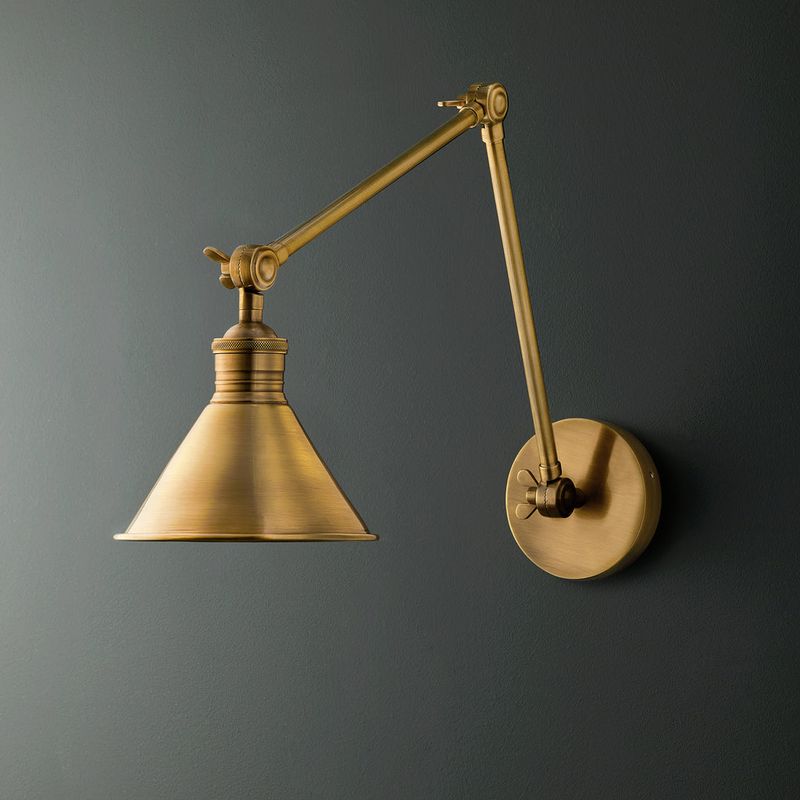
Lighting makes all the difference in creating that warm English kitchen ambiance, and wall sconces play a starring role. Unlike the industrial pendants popular in farmhouse style, English kitchens favor traditional brass or copper sconces with fabric or glass shades that cast a gentle glow.
Positioned strategically above sinks, prep areas, or flanking windows, these fixtures provide both task lighting and atmosphere. The warm metals develop beautiful patinas over time, contributing to that sense of history English kitchens are known for.
When selecting sconces, look for traditional shapes with articulated arms that can be adjusted as needed. Many English homes feature antique lighting that’s been rewired for modern use—a wonderful way to incorporate genuine period details. The soft, diffused light these fixtures provide creates that cozy evening atmosphere that makes English kitchens feel so wonderfully welcoming.
15. Beadboard Paneling
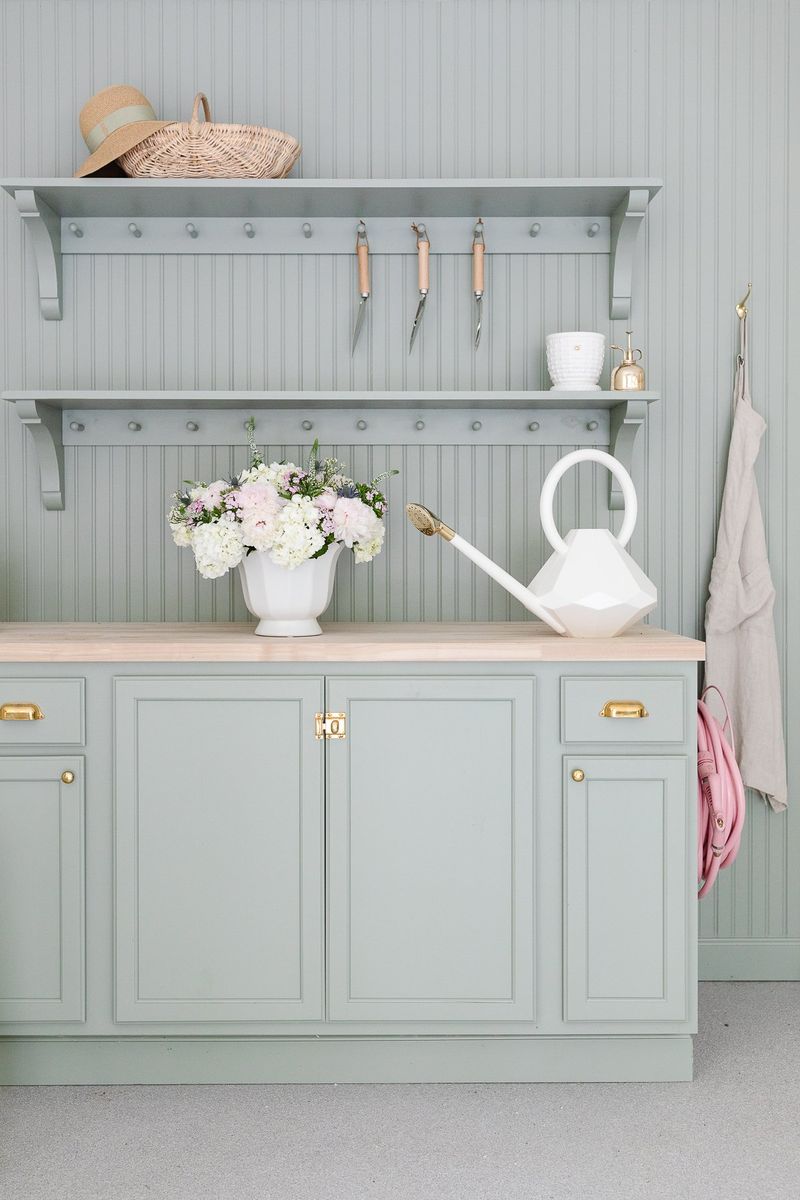
Vertical beadboard paneling (what the British often call ‘tongue and groove’) brings instant architectural character to English kitchens. This simple wooden detail can transform plain walls into something special without overwhelming the space.
Traditionally painted in soft colors like cream, pale blue, or sage green, beadboard creates texture and interest while remaining understated. I especially love how it protects walls from marks and scuffs in busy kitchen areas, combining practicality with beauty in that quintessentially English way.
Consider using beadboard as a backsplash, on the sides of islands, or as wainscoting around the lower portion of walls. For the most authentic look, choose narrower planks rather than wide panels, and finish with matte paint that shows subtle brush marks rather than a perfect spray finish those small imperfections are what give English kitchens their soulful, lived-in appeal.
16. Antique Rugs
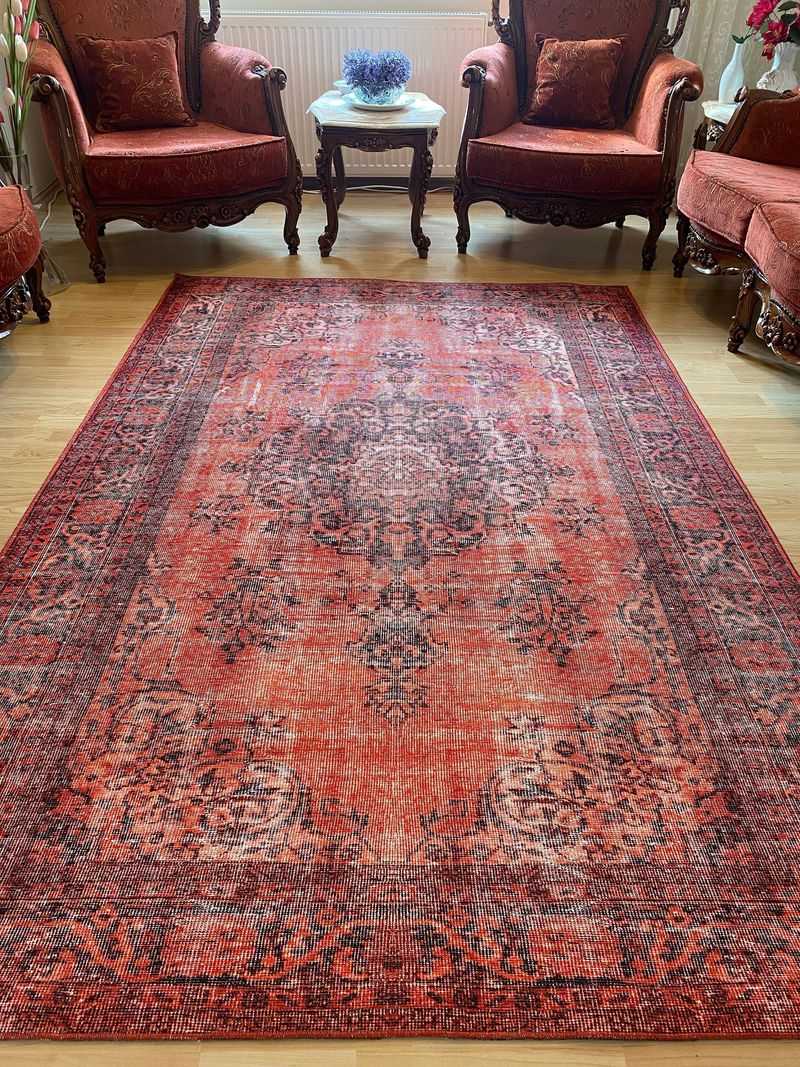
Nothing warms up a kitchen quite like a beautiful antique rug. While modern farmhouse style might feature sisal or simple striped rugs, English kitchens embrace the character and color of well-worn Persian or Turkish carpets.
These rugs bring instant history and soul to the space, often featuring rich reds, blues, and golds that complement traditional English color schemes. Don’t worry about spills—these rugs have usually survived decades or even centuries and develop even more character with gentle wear.
When selecting a rug for your kitchen, look for low-pile antiques with faded colors and perhaps some gentle wear that tells a story. Place them in front of the sink, under the breakfast table, or in the cooking area. The slightly imperfect nature of these textiles perfectly embodies the English approach to design—beautiful things meant to be used and enjoyed rather than preserved in pristine condition.
17. Classic Range Hoods

Forget sleek stainless steel hoods English kitchens celebrate architectural range hoods that serve as focal points rather than blending in. These substantial structures often feature curved or mantel-like designs that frame the cooking area with presence and personality.
Many English hoods are custom built from plaster or wood, then painted to match or complement surrounding cabinetry. I’m particularly drawn to designs that incorporate small shelves for cooking oils or frequently used spices, combining beauty with practicality.
When designing a range hood, consider proportions carefully it should feel substantial without overwhelming the space. Some homeowners incorporate decorative corbels or simple molding to add architectural interest. This attention to creating a proper cooking alcove rather than simply hanging a utilitarian hood demonstrates the English approach to kitchen design embracing cooking as a central activity worthy of beautiful surroundings.
18. Patterned Floor Tiles

Encaustic cement tiles with intricate patterns bring instant character to English kitchens. These handmade tiles feature designs pressed into the surface rather than printed on top, resulting in patterns that won’t wear away even after decades of foot traffic.
Traditional English patterns often include Victorian-inspired geometrics in deep blues, reds, and creams or delicate florals that complement painted cabinetry. The handmade nature means slight variations in color and pattern—imperfections that add to their charm and authenticity.
If genuine encaustic tiles exceed your budget, many companies now offer ceramic versions with similar looks at lower price points. For the most authentic English kitchen look, choose patterns with historical references rather than trendy modern designs, and consider how they’ll complement other elements in your space. These tiles create a foundation of pattern and interest that anchors the entire kitchen design.

